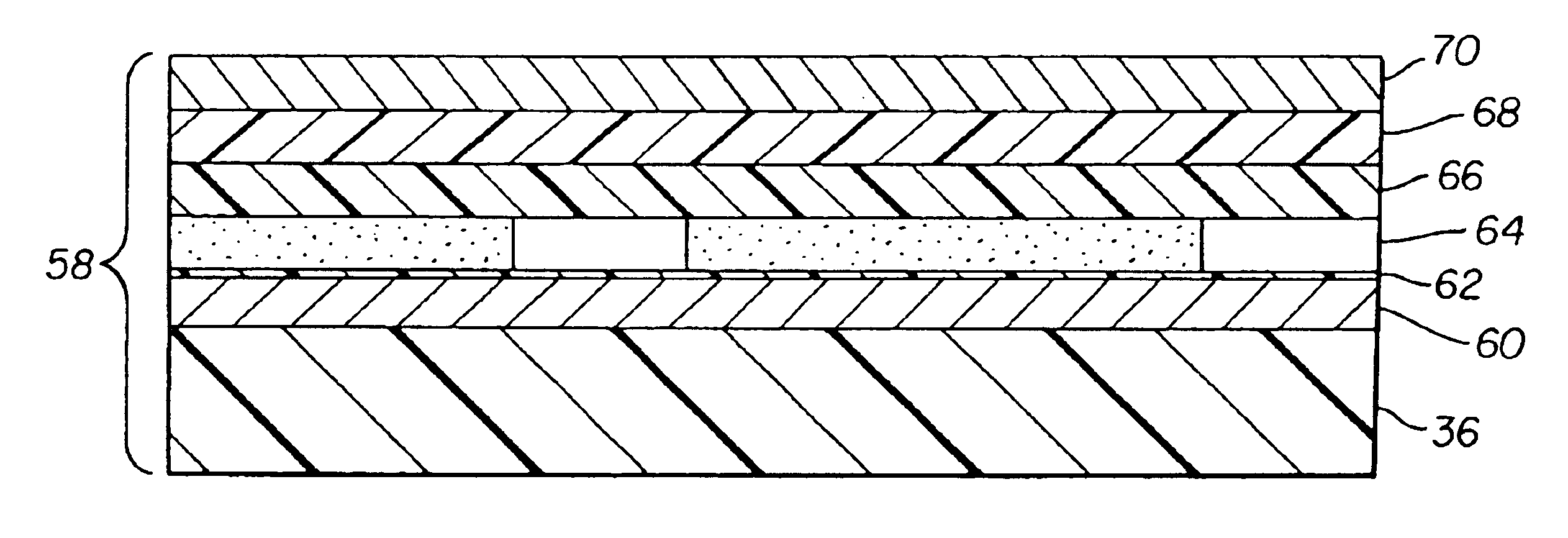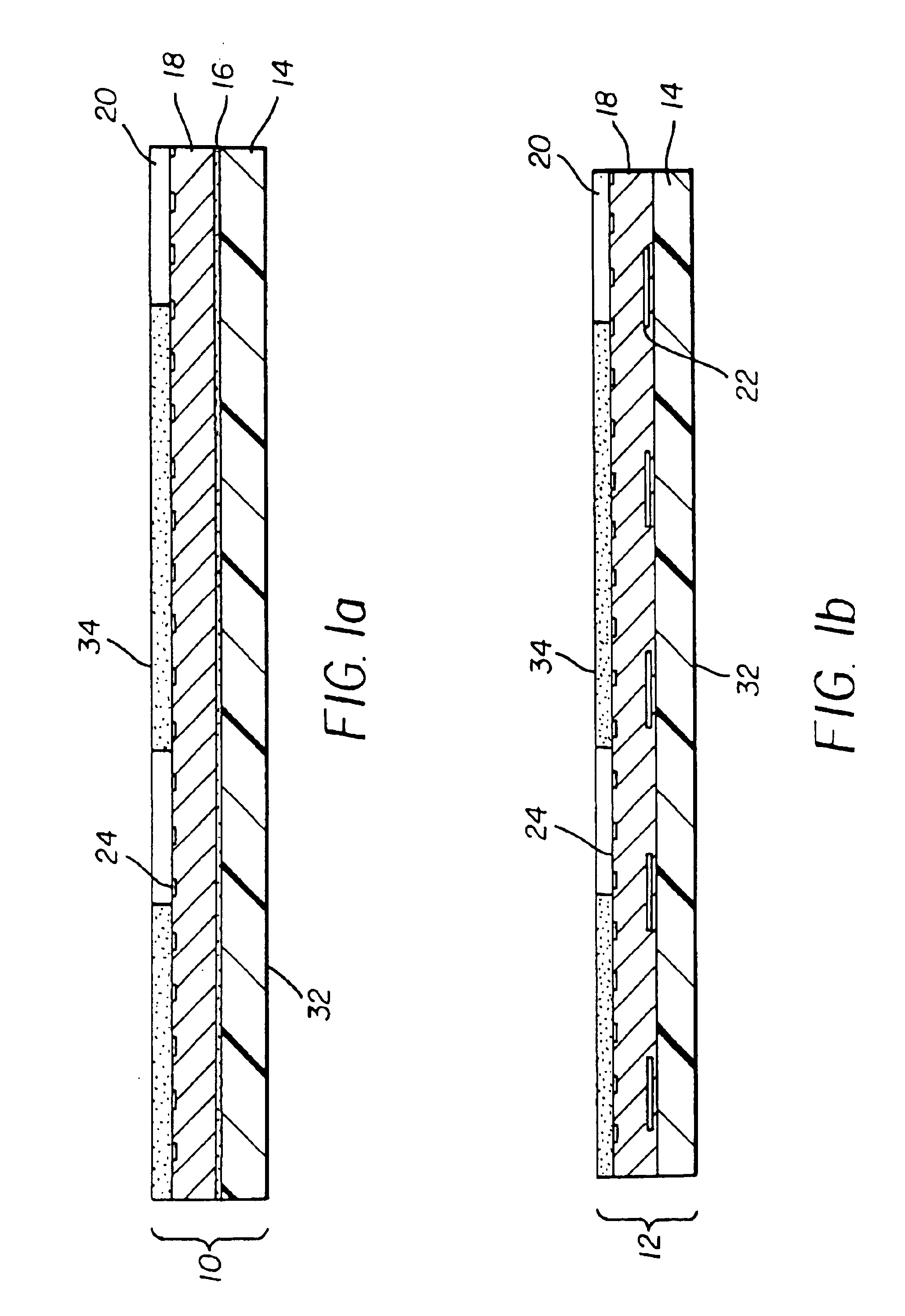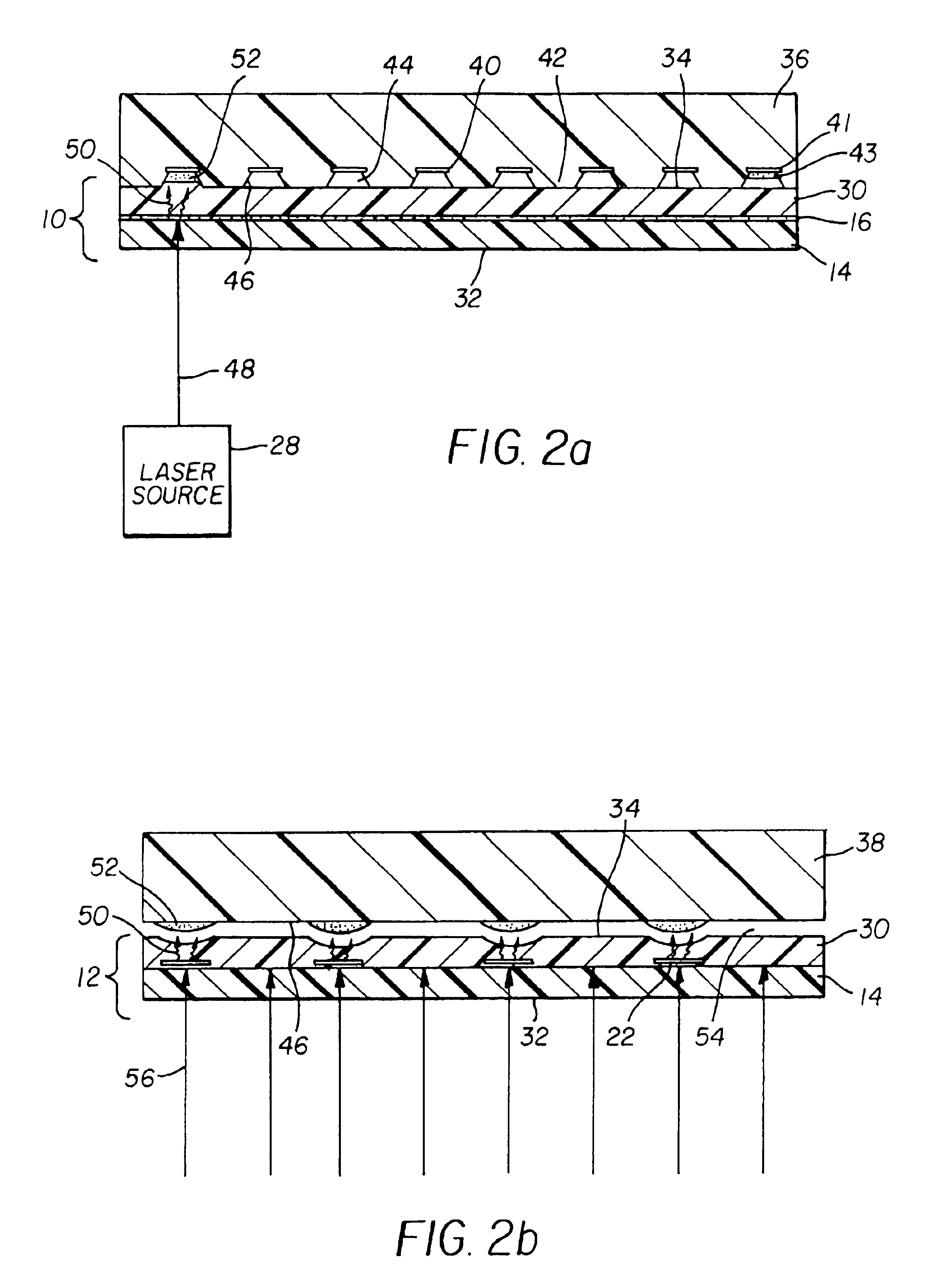Laser thermal transfer from a donor element containing a hole-transporting layer
- Summary
- Abstract
- Description
- Claims
- Application Information
AI Technical Summary
Benefits of technology
Problems solved by technology
Method used
Image
Examples
example 1
[0127]An OLED device was constructed from a comparative donor element in the following manner:[0128]1. Onto a polyimide donor support element film having a thickness of 104 microns, a coating of 60 nm of chromium metal was evaporatively deposited.[0129]2. A further coating of 20 nm of 2-tert-butyl-9,10-bis(2-naphthyl)anthracene (TBADN) was evaporatively deposited on the above donor support element. A further coating of 0.15 nm of green dopant I was then evaporatively deposited on top of the TBADN layer.[0130]3. A clean glass substrate was vacuum-deposited with indium tin oxide (ITO) through a mask to form a pattern of transparent electrodes of 40 to 80 nm thickness.[0131]4. The above-prepared ITO surface was treated with a plasma oxygen etch, followed by plasma deposition of a 0.1 nm layer of a fluorocarbon polymer (CFx) as described in U.S. Pat. No. 6,208,075.[0132]5. The above-prepared substrate was further treated by vacuum-depositing a 75 nm layer of 4,4′-bis[N-(1-naphthyl)-N-ph...
example 2
[0137]An OLED device was constructed from a donor element satisfying the requirements of the invention in the manner described in Example 1, except that after step 2, a further layer of 0.8 nm NPB was evaporatively deposited onto the donor element. Following this additional coating, the donor element was used in the subsequent steps of Example 1.
example 3
[0138]An OLED device was constructed from a comparative donor element in the manner described in Example 1, except step 2 was performed as follows:[0139]2. A further coating of 8.5 nm of ALQ was evaporatively deposited on the above donor support element. A further coating of 0.2 nm of 4-(dicyano-methylene)-2-t-butyl-6-(1,1,7,7-tetramethyljulolidyl-9-enyl)-4H-pyran (DCJTB) was then evaporatively deposited on top of the ALQ layer. A further layer of 8.5 nm of TBADN was evaporatively deposited on top of the DCJTB layer.
PUM
| Property | Measurement | Unit |
|---|---|---|
| Pressure | aaaaa | aaaaa |
| Nanoscale particle size | aaaaa | aaaaa |
| Nanoscale particle size | aaaaa | aaaaa |
Abstract
Description
Claims
Application Information
 Login to View More
Login to View More - R&D
- Intellectual Property
- Life Sciences
- Materials
- Tech Scout
- Unparalleled Data Quality
- Higher Quality Content
- 60% Fewer Hallucinations
Browse by: Latest US Patents, China's latest patents, Technical Efficacy Thesaurus, Application Domain, Technology Topic, Popular Technical Reports.
© 2025 PatSnap. All rights reserved.Legal|Privacy policy|Modern Slavery Act Transparency Statement|Sitemap|About US| Contact US: help@patsnap.com



